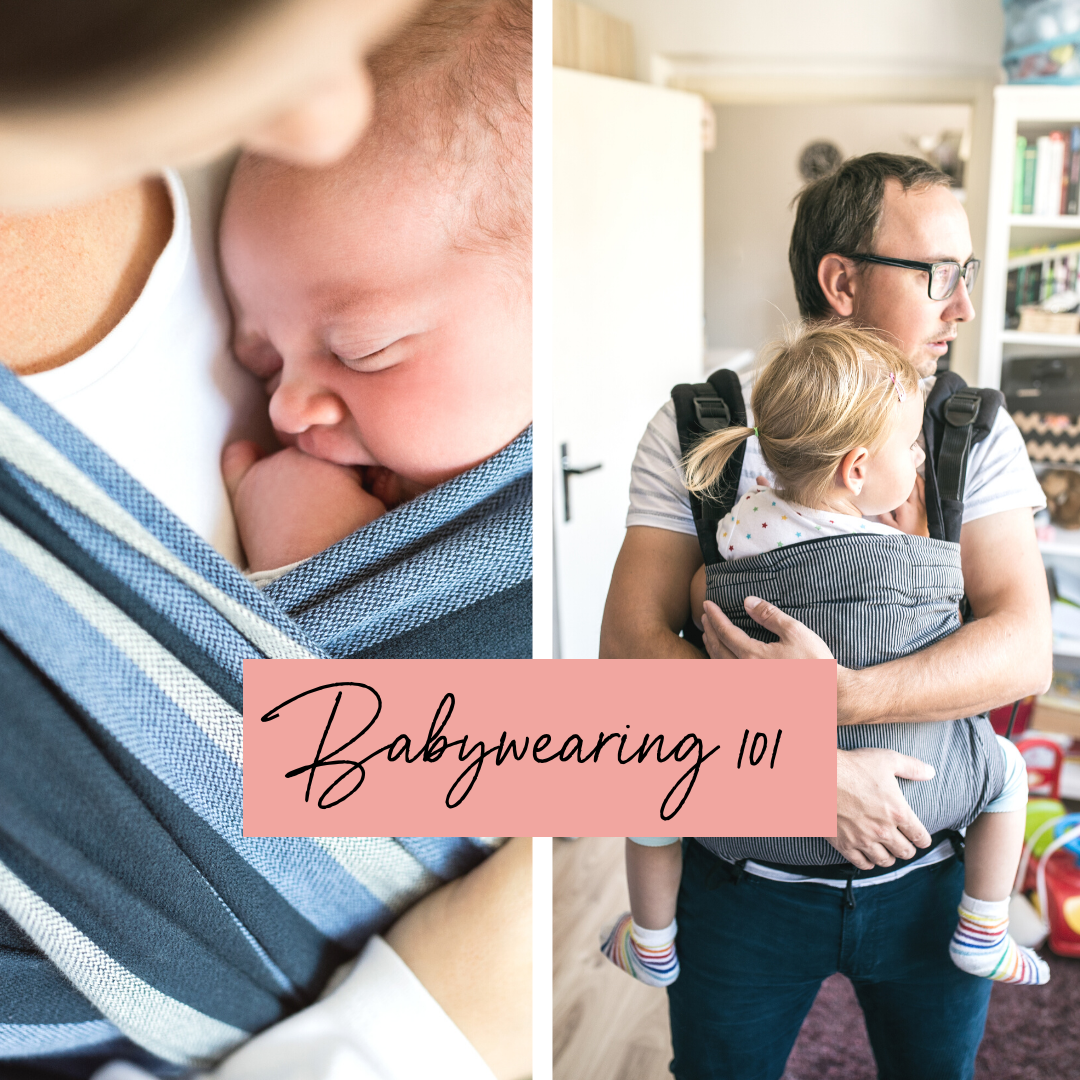Baby Wearing 101
Mommy Care Team
An Introduction to Baby Wearing: Learn How and Why It’s Beneficial
Have you seen more and more parents opting for baby slings, carriers, and wraps? Studies are beginning to show that the proximity and touch provided by baby wearing can enhance the bond, provide health benefits, and so much more.
Still Not Familiar With Baby Wearing?
Baby wearing basically means a parent, guardian, or caregiver uses an aid to snugly hold a baby to their body. Babies can be “worn” on either the chest or the back. Smaller babies should only be worn on the chest, and using an option that supports their neck and head as well as their body.
BeauGen Team members have found that other adults respect your personal space more than an infant or baby’s. Where they might reach into your cart and engage with or touch your child, they are much less likely to get close to your child when you are wearing them. This is a great way to protect your little ones especially during cold and flu season.
Proper Baby Wearing:
From birth to six months, the way you wear your baby is extremely important. Improper baby wearing can put strain on your baby's legs, hips, and spine. From birth until at least the first six months of age, you should wear your baby so that are facing you, not away from you. Your baby should be fully supported with a straight spine. And their legs should be in an "m" shape, with their knees slightly higher than their hips.
Improper baby wearing can lead to hip dysplasia. This means that the hip socket does not fully develop to cover the thigh bone and can lead to dislocation. By properly wearing your baby you can promote their healthy growth and development.
What Are the Benefits of Baby Wearing?
Calmer Babies:
The warmth, breathing, and swaddled feeling of an infant or baby carrier is soothing. Think about the womb, the sounds and sensations they’ve known up until this point. Your heartbeat, the warmth of your body, and the movement of your body are all they’ve known. Being in a carrier can recreate this environment to an extent and make your baby feel safe and secure.
With infants, wearing them close to the chest where they can hear your heartbeat, and breathing, while also feeling the warmth and movement of your body is very calming.
Heightened Communication:
Being close to your baby enables you to better pick up on their micro-movements and other various cues. You’ll also be able to soothe them faster through voice, movement, and the warmth of your body.
Regaining Your Arms:
Having a baby is wonderful. They bring so much joy to our lives. However, new parents might also equate having a new baby with the loss of their arms. Babies need to be held and comforted often, which can make getting things done around the house difficult.
With baby wearing you can do the dishes, fold the laundry, brew coffee, the opportunities are endless.
Increased Movement:
Exercise and outdoor activities like hiking are made possible earlier with infant carriers. You can take your little one along with you as you walk, visit the zoo or museum, even shopping becomes easier.

Bonding:
For non-breastfeeding parents, this method of carrying your child is very beneficial for establish that nurturing bond. Many partners love baby wearing because it's a means of gaining closeness, that breastfeeding parents gain through pumping and/or nursing.
Breastfeeding:
Some moms, depending on the carrier type and position of the baby are even able to use this as an opportunity to breastfeed. When out and about, breastfeeding in public can be a challenge. By using the carrier or sling you can achieve a koala like breastfeeding position.
Pro Tip: You can move your baby around and achieve more of a supported cross cradle position.
Options for Baby Wearing:
There are a wide variety of options when it comes to wearing your baby. You should make a selection based on your baby, your body, and your personal preferences. Each carrier option will list the ages, weights, and ways to carry your baby that are safe and suitable.
When making your selection, do some research to narrow down the options you think that will work well or that you like. Then, talk to friends, look up reviews, and get a feel for the carrier. Finally, when making your purchase, try to find an option that can be returned if it doesn’t work for your family.

Carriers:
Think of infant and baby carriers as a harness that enables them to be carried hands free. These typically rely on straps that buckle or snap. These straps are adjustable for both the adult and child.
Many carriers provide parents and caregivers a quick and easy way to carry a child. Many carriers offer different configurations to safely carry a baby as they grow out of the infant stage, and well into the toddler stages.
Wraps:
Essentially a long piece of fabric, wraps offer an ergonomic and swaddled approach to baby wearing. These are tied in various ways to offer support and comfort to both baby and the wearer. Because they are wrapped around an adult’s body, there aren’t any straps that need to be adjusted from person to person.
Wraps are great for younger babies as you can tuck their little heads safely inside the fabric as it goes up your chest and over your shoulder. Just make sure that their face is to the side (so their cheek is to your chest) and no fabric is touching their nose and mouth.

Slings:
Slings are very similar to wraps, but with one major difference. They are also a long piece of fabric, but feature a metal ring of sorts through which the fabric is fed after being wrapped around your body. This makes them great for holding babies as they grow and become a bit heavier.
Clothing:
Now parents can find shirts which feature a kangaroo pouch of sorts. Young babies can be easily lowered into this reinforced pouch for easy and comfortable baby wearing.

